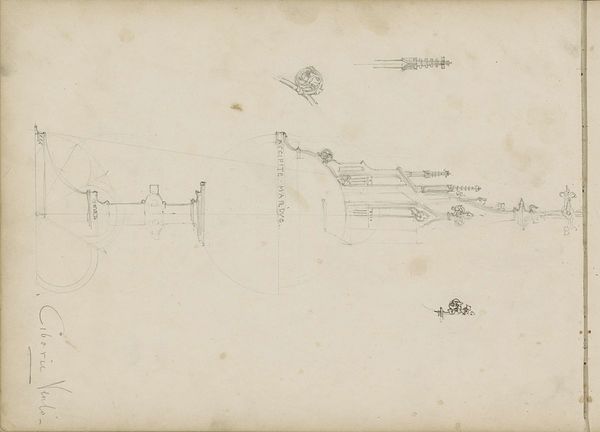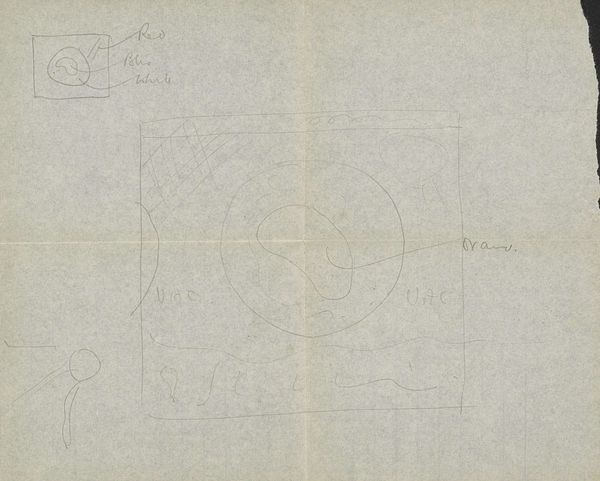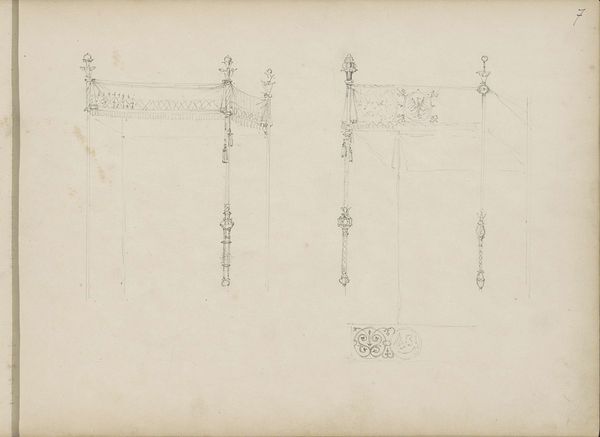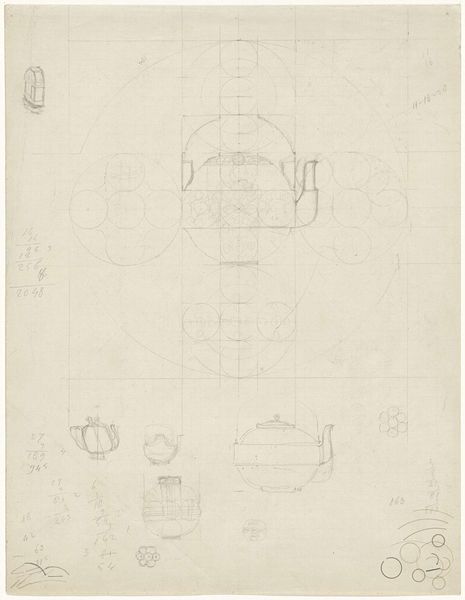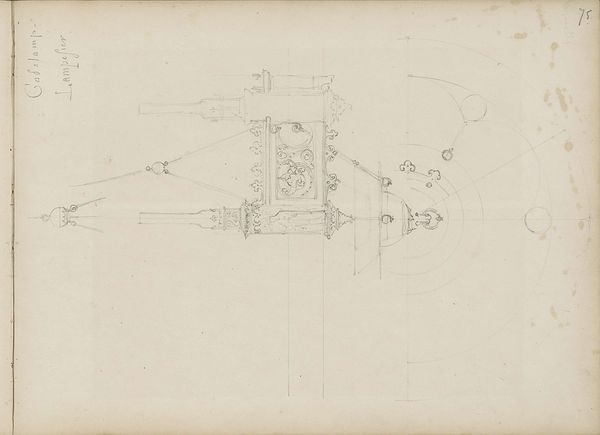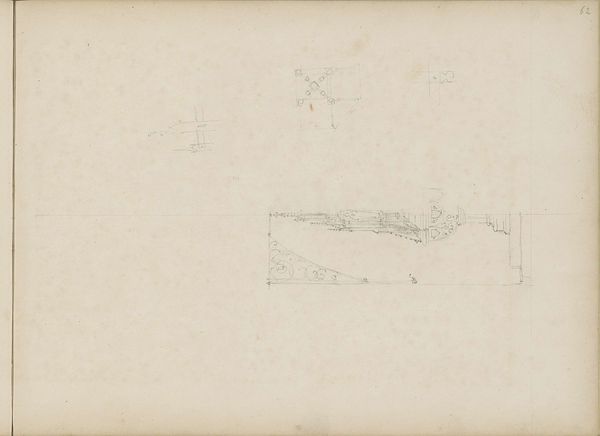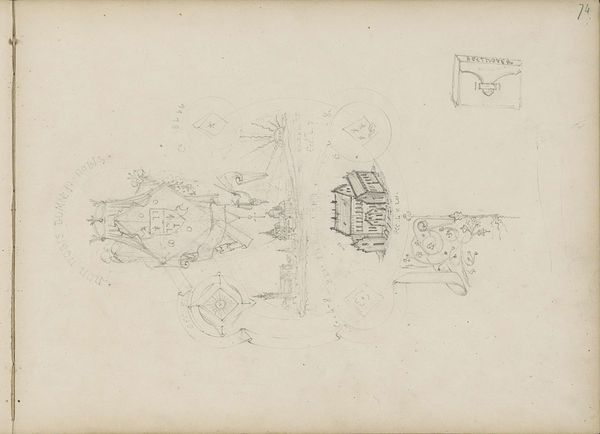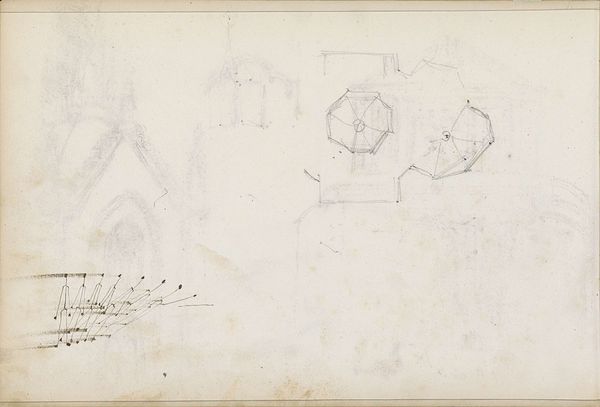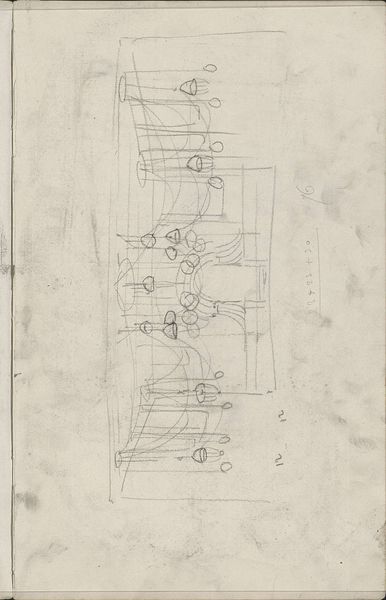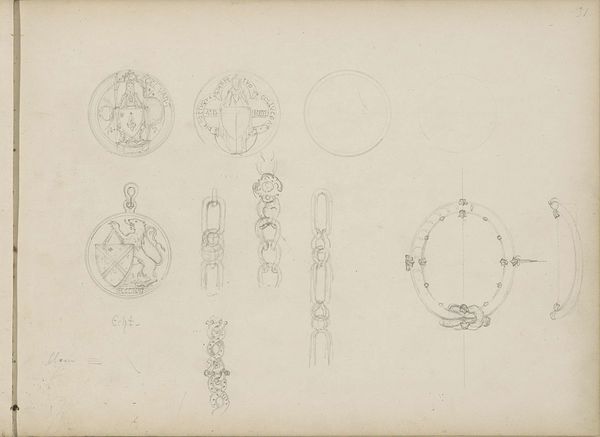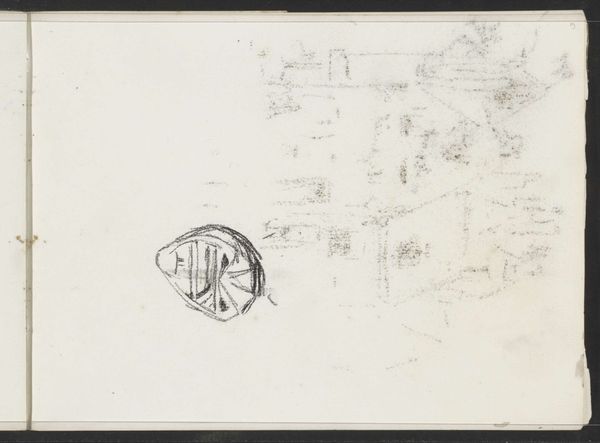
#
aged paper
#
toned paper
#
light pencil work
#
ink paper printed
#
hand drawn type
#
personal sketchbook
#
ink drawing experimentation
#
ink colored
#
sketchbook drawing
#
sketchbook art
Copyright: Rijks Museum: Open Domain
Curator: This is "Godslamp, Grave," a page from Pierre Joseph Hubert Cuypers' sketchbook, dating from around 1857 to 1859. It’s an ink drawing on toned paper, part of the collection at the Rijksmuseum. What are your initial thoughts? Editor: Stark, almost sterile. The aged paper contributes to the austerity. The linear quality and faint pencil work suggests a mind at work—organizing and drafting a design. Curator: Exactly. Note the precision of the circles and the meticulousness of the gothic architectural elements on the lamp. The structural underpinnings of this object seem as important as the ornamentation itself. Editor: It is almost like a blueprint, a functional diagram alongside more symbolic details. The “Godslamp” is quite suggestive. Lamps in graves can signal enlightenment shining in the darkness or eternal watchfulness over the deceased. Do we know the significance of this particular design? Curator: Cuypers was, of course, a major figure in the Gothic Revival in the Netherlands. His work on church restorations would require careful attention to the iconography, referencing established conventions and introducing new variations to fit specific theological programs. Here we have an interesting juxtaposition of careful geometric form, coupled with highly ornate and religiously symbolic ornamentation. Editor: I'm intrigued by how this seemingly simple sketch unlocks layers of cultural meaning and craftsmanship. One sees the confluence of geometry and spiritual symbolism. The light from the lamp banishes death and gloom and becomes almost like an ensign of Christian resurrection. Curator: A testament to the layered symbolism present in functional forms. These designs are more than what they initially seem: a careful consideration of religious iconography through functional design. Editor: It underscores how art is not just about the final form but about the embedded beliefs, and it’s rewarding to engage with such details. Curator: Agreed; a simple sketch on toned paper becomes a fascinating insight into Cuypers' creative process and cultural landscape of the period.
Comments
No comments
Be the first to comment and join the conversation on the ultimate creative platform.

